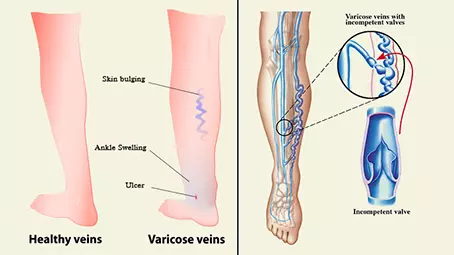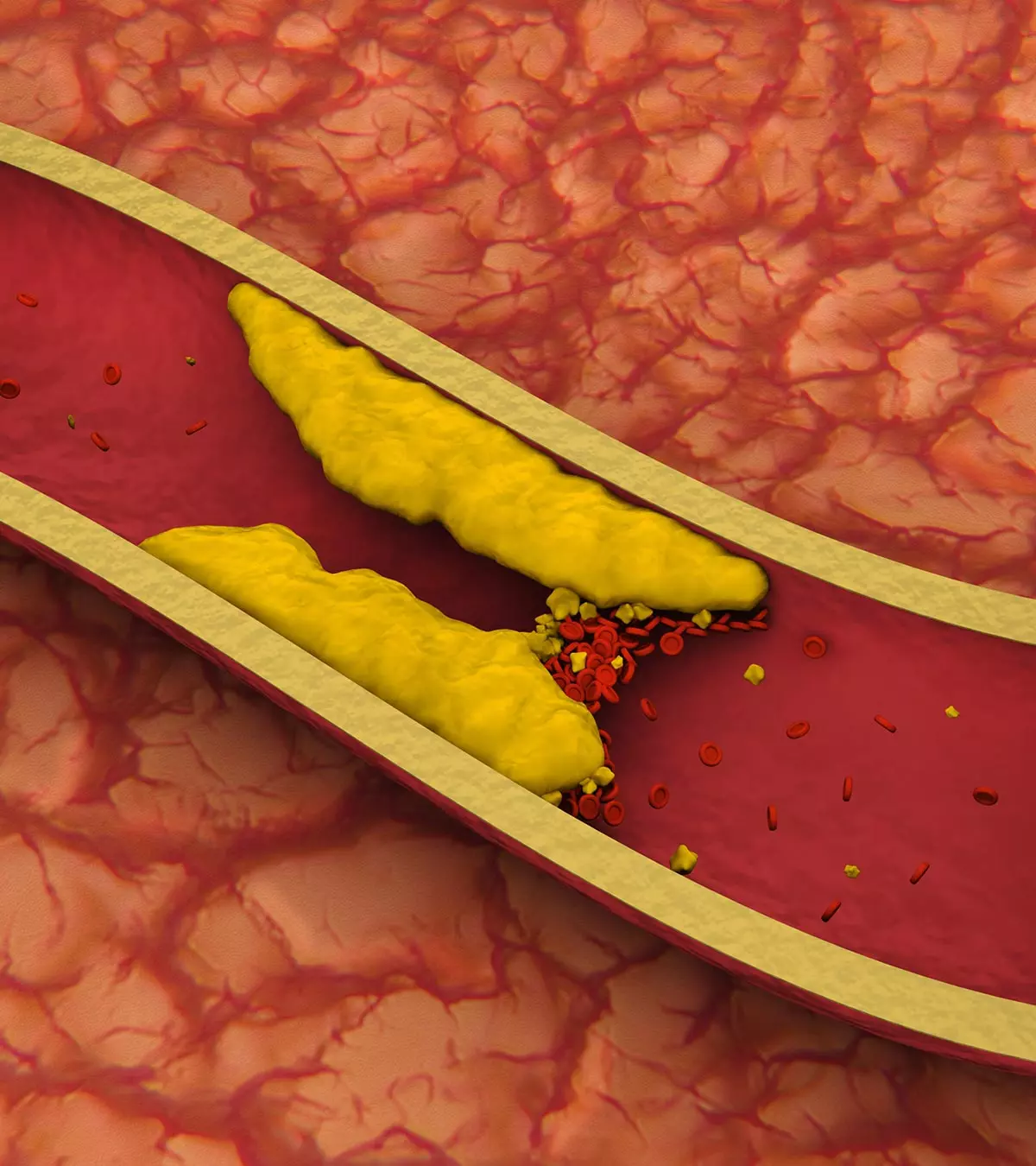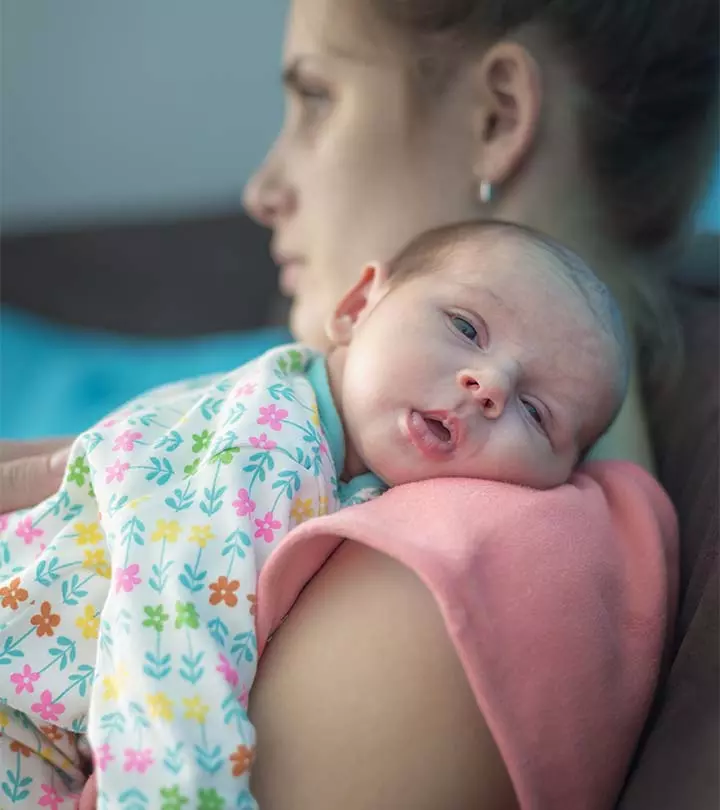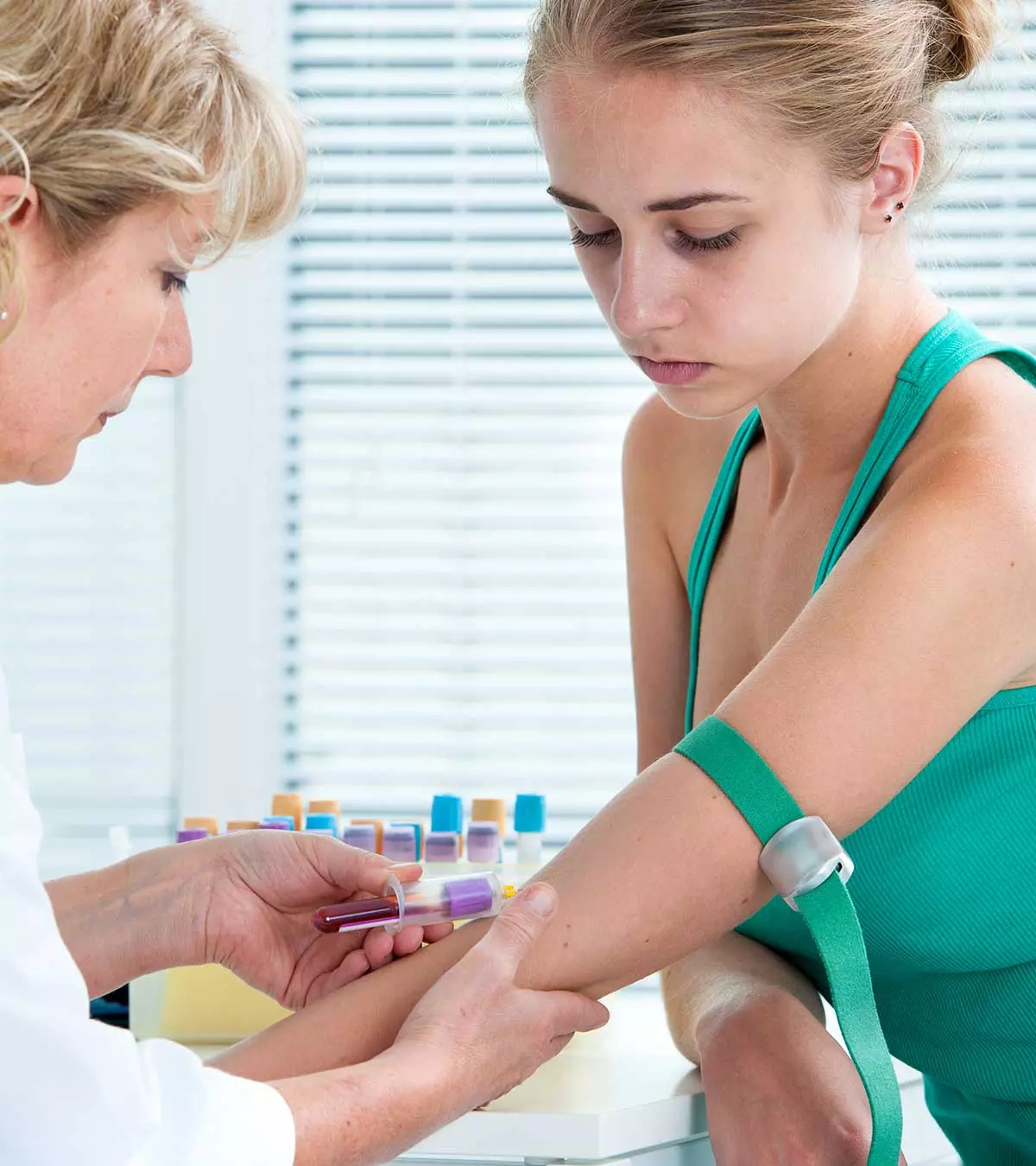
Image: iStock
Puerperal infections, also called postpartum infections or Puerperal fever, include a wide range of infections that occur up to six weeks after childbirth. The most common postpartum infections are endometritis, urinary tract infection (UTI), wound infection, and mastitis. Puerperal infections may affect 5-24% of mothers and are common causes of prolonged hospitalization after childbirth. If left untreated, these infections can be life-threatening (1).
Read about the types, causes, symptoms, risk factors, complications, diagnosis, treatment, and prevention of puerperal infections.
Key Pointers
- Puerperal infections can develop from rupture of the perineum or vagina, prolonged labor, multiple uterus examinations, etc.
- Fever, flu-like symptoms, abdominal pain, and persistent bleeding are signs and symptoms varying based on the type.
- Preventive antibiotics, maintaining hygiene, and drinking plenty of fluids can help prevent postpartum infections.
What Are The Types Of Postpartum Infections?
Puerperal infections can be grouped into the following types (2):
1. Puerperal endometritis
Puerperal endometritis is the uterine wall (endometrium) infection in postpartum. The severity of endometritis may vary from mild to severe. If left unmanaged, the infection can spread to other layers of the uterus and extend beyond to the adnexa and the peritoneal cavity. Pelvic peritonitisi A condition where the thin membrane in the abdomen that covers the organs is inflamed because of exposure to infected body fluids and peritonitis may become life threatening infections if neglected. Therefore, doctors may recommend preventive antibiotic treatment if a woman has a high risk for postpartum endometritis (3).
 Quick fact
Quick fact2. Surgical site infections
Surgical site infections (SSIs) are wound infections occurring on the incision site after c-section delivery. Bacteria from the skin infects the wound and interfere with healing and recovery. Superficial and deep incisional site infections may occur postpartum. Postcesarean wound infection affects nearly 2-7% of women who undergo c-section delivery (4).
 Quick fact
Quick fact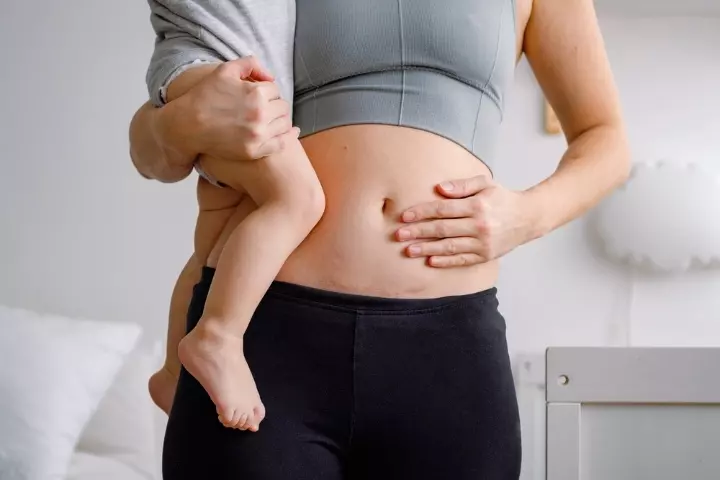
3. Puerperal mastitis
Puerperal mastitis can be infective or non-infective. Incomplete emptying or poor breastfeeding techniques may cause milk stasis and non-infective mastitis. Cellulitis, intra-lobular tissue infection, abscess, and sepsis can be seen in infective mastitis.
Mastitis is common in the postpartum period, accounting for 12% of all postpartum infections. Most mothers develop puerperal mastitis within four weeks postpartum. Staphylococcus aureusiBacteria commonly found in the environment and may cause boils, blisters, and inflammation of skin is the common organism causing infection, and this can enter the breasts through cracks in nipples or areola. Streptococci and E.coliiA part of the gut microbiome, they are usually harmless but may contaminate food and water, causing diarrhea and fever may also cause mastitis (2).
 Quick tip
Quick tip4. Urinary tract infections
Urinary tract infections (UTIs) such as acute cystitis (bladder infection) and pyelonephritis (kidney infection) may occur in postpartum. Nearly 8-12% of women reported having postpartum bacteriuria (bacteria in urine), and 25% of them developed dysuriaiA condition that causes pain and burning during urination and other UTI symptoms.
Cesarean section delivery, operative vaginal delivery, bladder catheterization, etc., may increase the risk of UTIs after childbirth. However, many women tend to have asymptomatic pyuria (pus in urine) or bacteriuria postpartum. The morbidity of these conditions in the postpartum period is unknown (2).
5. Episiotomy or perineal infections
Episiotomy infections occur at the site of the episiotomy incision. There is a 0.1-2% chance of infections after episiotomy. The risk for developing infection increases with the increased degree of tear. Midline episiotomy and vaginal hematomas followed by vaginal birth can increase the risk of postpartum perineal infections (2).
6. Epidural abscess
Epidural abscess is the collection of pus in between the outer covering of the brain or spinal cord and skull or spine. This may occur due to infection followed by epidural anesthesia during labor and delivery. Skin organisms can enter during anesthesia if the sterility is not maintained. Most women develop epidural abscess within five days postpartum and have positive blood cultures. Some women may develop meningitisiInflammation of the protective membranes and fluid that surround the brain and spinal cord , osteomyelitisi An acute or chronic bone infection causing inflammation and swelling , or paraspinal muscle infection after epidurals. Fortunately, these are rare infections.
In addition, women are also vulnerable to severe influenza-related illness for the first two weeks postpartum. Therefore, health care providers encourage new mothers to seek early medical care and treatment for influenza-like illnesses and other infections in the early week of postpartum (2).
What Are The Risk Factors And Causes Of Puerperal Infections?
Trauma to the abdominal wall and genitourinary system (reproductive and urinary tract) is the major cause of postpartum infections. Physiologic or iatrogenic (caused by medical interventions) trauma during childbirth or abortion may cause bacterial contamination of sterile environments. Ascending bacterial infections can also occur when the bacteria from the skin move into the body.
The following risk factors may increase the likelihood of puerperal infections (5):
- Pre- or post-term labor
- Multiple internal exams (uterus exams)
- Thick meconium staining
- Prolonged labor

- Prolonged rupture of membranes
- Internal uterine or fetal monitoring
- Operative vaginal delivery using vacuum or forceps
- Manual removal of the placenta
- Foley or urinary catheter use
- Postpartum hemorrhage
- Retained products of conception
- Sexually transmitted infections
- Bacterial vaginosis
- Group B streptococcus positive status
- High body mass index
- Diabetes mellitusi A metabolic disorder where the body cannot use insulin properly
- HypertensioniA condition where the blood pressure is higher than normal, increasing the risk of strokes and heart ailments
- Advanced maternal age
- Immune compromise (weak immune system)
Overweight with advanced maternal age is associated with a higher risk of postpartum infections. This can be due to the increased risk of pregnancy and delivery-related complications.
What Are The Signs And Symptoms Of A Postpartum Infection?

Signs and symptoms of puerperal infections may vary depending on the type and severity. However, fever and pain can be seen in most postpartum infections.
Common signs and symptoms of puerperal infections may include (2):
- Fever
- Uterine tenderness
- Vaginal bleeding
- Foul-smelling lochia
- Mild or severe abdominal pain
- Erythema (redness), warmness, swelling, and pain on the incision site
- Purulent discharge from the wound
- Headache
- Focal neurologic signs
It is recommended to seek a doctor’s advice if you notice any signs and symptoms of infection postpartum.
Can Puerperal Infections Cause Complications?
The following complications may occur if the puerperal infections are not treated appropriately (2):
- Sepsis is a medical emergency when the body shows an extreme response to an infection.
- Bacteremia is the presence of bacteria in the blood. This can be asymptomatic in most cases.
- Shock or septic shock is when the blood flow is diminished due to hypotension (low blood pressure).
- Septic pelvic thrombophlebitis (SPT), also called suppurative pelvic thrombophlebitis, is infection and damage of the ovarian veins and blood clot formation (thrombogenesis). This may occur if the endometritisiA condition that causes inflammation in the lining of the uterus Mastitis: Breast inflammation causing pain and swelling or other pelvic infection is not treated appropriately.
- Necrotizing fasciitis (NF) is also known as a flesh-eating disease that causes the death of body tissue. This may occur in intense and severe infections (fulminant infections)
- Abscess (collection of pus) and peritonitis (inflammation of the peritoneum) are complications progressing beyond the uterus.
The symptoms of shock, systemic illness, and severe abdominal pain may indicate complications such as toxic shock syndrome or necrotizing fasciitis. Severe symptoms require immediate medical care.
Can Puerperal Infections Be Prevented?
The healthcare providers practice the following strategies to avoid the risk of spreading infections to the mother in the hospital settings (6):
- Maintain hand hygiene

- Change scrub clothes
- Isolate infected persons
- Limit the staff contact
- Administration of prophylactic antibiotics
- Use of sterilized medical device properly
Doctors may also recommend the following to help prevent postpartum infections (7):
- Practice frequent hand washing
- Avoid shaving before the delivery
- Avoid the use of public pools, saunas, and tubs after delivery
- Use sanitary pads instead of tampons and change the pads on time
- Avoid sexual intercourse or inserting anything into the vagina until the vaginal bleeding stops postpartum
- Avoid the use of vaginal douches
- Do not hold urine
- Drink plenty of water
- Avoid wiping from back to front after using toilets
How Is The Puerperal Infection Diagnosed?
History of birth events, risk factors, presenting symptoms, and the physical examination may help the healthcare provider diagnose puerperal infections in many cases. A blood and urine test is usually ordered to look for any changes. Leukocyte count (white blood cells) can be high in several bacterial infections. However, this may not be specific during pregnancy and postpartum.
Urine or vaginal swab culture may help identify the causative organism. Obstetricians may form ultrasound imaging if it is required. Blood culture of repeated bacterial specimens and measures of serum lactate levels are done in puerperal sepsis.
What Is Postpartum Sepsis?

The World Health Organization (WHO) defines puerperal sepsis as the genital tract infection occurring at labor or within 42 days postpartum.
The following symptoms are seen in postpartum sepsis (8):
- Fever (pyrexia)
- Pelvic pain
- Delay in uterus size reduction (uterus involution)
- Foul-smelling vaginal discharge
If left unmanaged, puerperal sepsis may result in maternal death. WHO reports estimate that 15% of maternal death due to childbirth problems may occur due to puerperal sepsis.
How Are Postpartum Infections Treated?
Antibiotics are prescribed for puerperal infections. The treatment may begin with broad-spectrum antibiotics. Oral antibiotic therapy is suggested for mild infections, and specific antibiotics are given based on clinical presentation, post blood, and urine tests. Doctors may prescribe regimens including more than one antibiotic medication.
Some women with severe symptoms such as high fever may require hospital administration and intravenous antibiotic therapy until the fever subsides for 24 to 48 hours. Supportive care such as electrolytes and IV fluids are given if needed. Lactation-safe medications that do not affect the baby are given to breastfeeding mothers (2).
What Is The Outlook For Puerperal Infections?
The prognosis of postpartum infections is related to the severity of the infection. Nearly five to ten percent of women with puerperal infections experience consequences. Women with postpartum sepsis have 20%, and septic shock has a 40% mortality rate. However, identifying and treating infections in the initial stages can help prevent life-threatening complications in the postpartum period (5).
Frequently Asked Questions
1. Are postpartum infections more common in cesarean or vaginal births?
The chances of the infection???s occurrence may be slightly higher in cases of cesarean section. A study noted an infection rate of 7.4% for women with a cesarean section and 5.5% for those with a vaginal delivery (10).
2. Are postpartum infections more common in certain age groups?
Chorioamnionitis and endometritis were more likely to occur in younger women. The odds of developing these infections were either reduced or insignificant for older women compared to those aged between 25 and 29 (11).
3. How long does it take for a postpartum infection to clear up?
With the administration of antibiotics, most patients respond within 48 hours, with the fever subsiding entirely within three days. However, sepsis or superinfection is possible if an individual does not show signs of improvement post-treatment (2).
4. Can postpartum infections cause infertility?
There is lack of sufficient evidence to suggest that postpartum infections can cause infertility in women. However, a few conditions including sexually-transmitted infections, pelvic inflammatory disease, or gonorrhea may increase the risk of secondary infertility (12).
Puerperal infections develop in the uterus and the surrounding areas after delivery. You could reduce your risk for postpartum infections by following the preventive measures and seeking delivery in healthcare settings. Puerperal infections can be treated with antibiotics. Mothers are advised to seek medical care for symptoms such as fever, afterbirth pains, or foul-smelling vaginal discharge postpartum to identify and treat the cause. Always ask your healthcare provider to know the postpartum care based on your mode of delivery and risk factors.
Infographic: Different Types Of Puerperal Infections
The phase after delivery ensues several events, such as having the responsibility of caring for the newborn, recovering from the birthing process, and getting back into the pre-pregnancy state. Additionally, you also have to be aware of any potential puerperal or postpartum infections that may occur. Check out the infographic below to learn about various types of puerperal infections.

Illustration: Momjunction Design Team
Illustration: Puerperal Infection: Signs Causes And Treatment
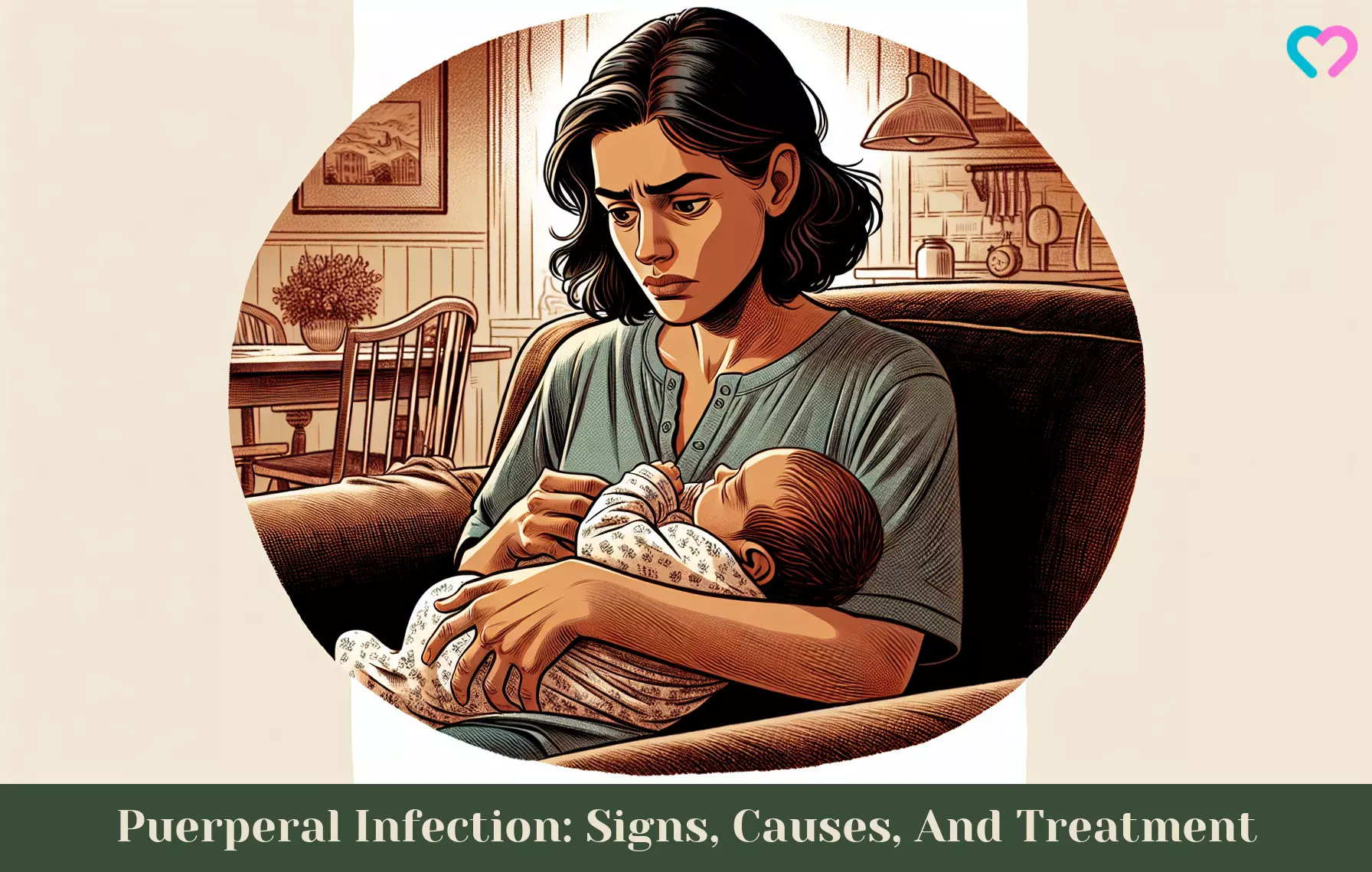
Image: Dall??E/MomJunction Design Team
References
- Prevalence of postpartum infections: a population-based observational study.
https://obgyn.onlinelibrary.wiley.com/doi/10.1111/aogs.12455#:~:text=Postpartum%20infections%20affect%205%E2%80%9324wound%20infection%20and%20mastitis%201. - E Dalton and E Castillo; Postpartum infections: A review for the non-OBGYN.
https://www.ncbi.nlm.nih.gov/pmc/articles/PMC4934978/ - Michael Taylor and Leela Sharath Pillarisetty; Endometritis.
https://www.ncbi.nlm.nih.gov/books/NBK553124/ - Tetsuya Kawakita and Helain J. Landy; Surgical site infections after cesarean delivery: epidemiology, prevention and treatment.
https://www.ncbi.nlm.nih.gov/pmc/articles/PMC5497372/ - Marina Boushra and Omar Rahman; Postpartum Infection.
https://www.ncbi.nlm.nih.gov/books/NBK560804/ - D A Eschenbach and G P Wager; Puerperal infections.
https://pubmed.ncbi.nlm.nih.gov/7004691/ - Preventive Self Care After Vaginal Birth.
https://www.healthpages.org/health-a-z/preventive-care-after-vaginal-birth/# - Meharun-Nissa Khaskheli, et al; Risk factors and complications of puerperal sepsis at a tertiary healthcare centre.
https://www.ncbi.nlm.nih.gov/pmc/articles/PMC3817780/ - Mastitis.
https://my.clevelandclinic.org/health/diseases/15613-mastitis - Epidemiology of and surveillance for postpartum infections.
https://www.ncbi.nlm.nih.gov/pmc/articles/PMC2631873/ - Maternal age and risk of labor and delivery complications.
https://www.ncbi.nlm.nih.gov/pmc/articles/PMC4418963/ - Secondary Infertility.
https://my.clevelandclinic.org/health/diseases/21139-secondary-infertility
Community Experiences
Join the conversation and become a part of our nurturing community! Share your stories, experiences, and insights to connect with fellow parents.
Read full bio of Dr. Ben Abbes Taarji Hicham
Read full bio of Dr Bisny T. Joseph
Read full bio of Rebecca Malachi
Read full bio of Reshmi Das







